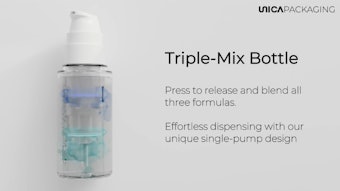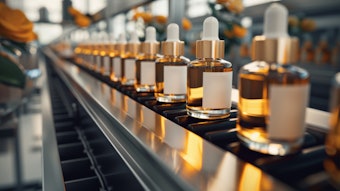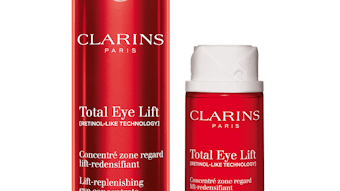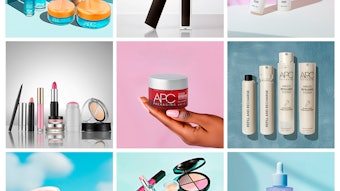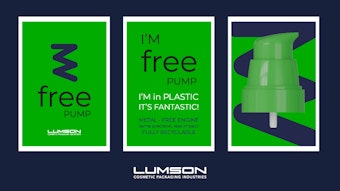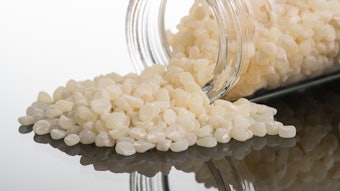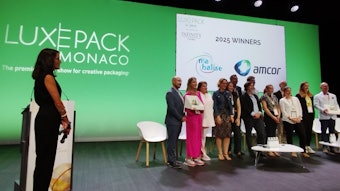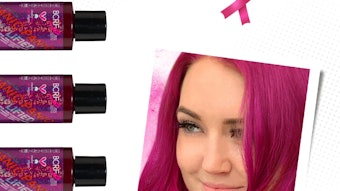There is much to be said about the push-pull nature of the beauty industry. Suppliers meet marketers’ initiatives to fill a consumer demand, which leads to supplier innovations that can, in turn, create or push another consumer demand to start the circle again.
Airless packaging is a successful result of this push-pull scenario. It facilitates the delivery of products that fulfill a number of trend desires for a beauty product (preservative free, high-tech, luxury), and its practicality suits consumers—delivering measured product and increasing shelf life.
“It definitely allows for more stable delivery of formulas using ingredients known for instability or oxidation,” says dermatologist Dennis Gross, MD, creator of MD Skincare, which now utilizes airless packaging for 21% of its product line.
As more and more brand owners opt for airless packaging, designs, too, are pushing the envelope—and gaining both prominence on shelves and in the industry. The Rexam airless packaging for L’Oréal’s Skin Genesis, for example, won the International Package Design Grand Award for 2008 Package of the Year, and the increasing variety demonstrates suppliers’ work to combine aesthetics and function—again, marketers are willingly succumbing to the nudge and utilizing the offerings.
The evolution and impact of airless packaging on consumer perception is explored with Jim Gabilanes, senior vice president, sales and marketing, Flexpaq Corporation; Vonda Simon, president and founder, SeaCliff Beauty Packaging & Laboratories; Jim Slowey, vice president, sales and marketing, Arrowpak; and Terry Sweeney, director of sales, Mega Pumps.
Advantages and Perception
GCI: What are the advantages of airless pumps?
Gabilanes: In part, it is the sleek and high-end design of the package, and it’s an all-inclusive package (pump/bottle/cap). In addition, an airless package can handle very viscous products compared to a conventional pump, and no air gets back into the package. Therefore, it’s ideal for products that discolor with air (vitamin C, for example) or for products formulated with fewer preservatives, and it allows more complete product usage, with less bulk residual left in the package compared to a standard bottle. There is also the cleanliness and product efficacy aspect, as compared to a tube or, especially, to a jar where product is exposed several times during usage to air, fingers, etc. In airless packaging, product is delivered fresh with each application. Previously, high [viscosity] products were usually packaged in tubes or jars; now, airless systems provide marketers more packaging options.
Simon: The pumps evacuate 99% of the product, which is great for the consumer. And because they are beautiful and less messy, there is a larger perceived value, since they look so much larger in size than dispensing pumps and bottles.
Slowey: Airless technology allows formulations to maintain integrity longer, as they are not exposed to air or contaminants with every use. This allows new formulations that contain less [amounts of] preservatives to be brought to market and expansion of product lines.
Sweeney: Airless dispensers meet the needs of consumers by providing a superior product experience over traditional packaging. Airless dispensers offer product protection from air, provide precise and repeatable dosing, and allow consumers to get the most product from the packaging by dispensing nearly all of the contents—a notable contrast to tubes and bottles with dip tube pumps.
Marketers and brand managers also find that airless dispensers are meeting the need to provide consumers with a package that increases the perceived value of the product purchased. Many of the new skin care products, including antiaging and wrinkle-reducing products, contain expensive ingredients. Asking consumers to pay higher retail prices for these products without upgrading the dispensing system produces weak retail results. Brand managers are finding that packaging these expensive formulas in higher end packages helps consumers justify the retail purchase.
GCI: Are there limitations to the kinds of formulas or product types that can be dispensed with airless packaging?
Gabilanes: Yes. Testing should be the first step in the development of every project.
Simon: There are a few limitations to what can be dispensed with an airless systems, such as scrubs. There are also some liquids that may be used but should go through stringent testing beforehand.
Sweeney: Airless dispensers are well-suited for medium to thicker viscosity formulas. This allows marketers to sell a more concentrated formula, giving consumers a better product and using less packaging.
GCI: What has been the consumer response? Do they actively seek airless packaging?
Gabilanes: Consumers prefer an airless option, thanks to the sleek design. They also like the cleanliness aspect.
Simon: Awesome—due to the evacuation of 99% of the product, which is what everyone wants when purchasing a high-priced skin cream, for example. We are constantly being asked for airless systems for many types of applications.
Sweeney: Consumers enjoy the experience of a quality dispensing system. I believe that today’s consumers are looking for the “total package”—excellent product in a quality dispenser.
GCI: What is the cost impact? Is there an impact on product performance?
Gabilanes: Airless packaging is usually more expensive than a conventional pump/bottle packaging, but offers a definitively higher performance.
Simon: It’s definitely higher priced due to the system, but you can keep the cost down using plastic injected parts versus metal, which could bring your cost closer to a dispensing pump and bottle. Performance of an airless pump is much better, since the piston system swipes the walls to evacuate almost all of the product.
Slowey: While we have seen airless packaging prices come down of late, the technology does cost more than traditional pump and bottle configuration, but the ability to use the entire product without contamination or drying out and discoloring is enough to make the packaging very desirable for many cosmetic applications.
Sweeney: The old adage “you get what you pay for” stands true for many things, including packaging. Airless dispensers are really a dispensing device, molded and assembled with multiple components to accomplish an end result: product protection, precise and repeatable dosing of medium- to high-viscosity products and a premium consumer experience. Although more expensive than tubes, bottles and jars, it is hard to compare the cost since these packages don’t offer the same features.
GCI: Is it getting more difficult to “wow” consumers?
Simon: No. I think many marketers are still not using airless packaging, so there are so many other formulas that can be introduced into airless systems that will then wow the consumers of those products, because they are much less messy and allow more product evacuation.
Slowey: It often appears that we have “done every shape,” and the next day a new line of packaging is introduced that allows for some personalization or privatization of a brand. Our designers and development people are always at the drawing board trying to put the next great family of packaging together. The introduction of so many new decorating processes have also allowed the consumers to still be wowed.
Sweeney: It is always a challenge to wow consumers, and marketers continue to look for ways to accomplish that. Recently, several brands—including Olay, Sunsilk, DDF and Avon—have utilized airless packaging to fill a dual phase “swirl” product. This is a two-part product filled in a swirl pattern. Because the piston inside the airless dispenser rises as the product is dispensed, the active ingredient consistently doses and the swirl effect remains intact until the package is fully evacuated.
GCI: How has airless packaging evolved over the past five years, and what evolution has this, in turn, fostered in product/formula development?
Gabilanes: There are more and more custom designs (custom caps, custom actuators or custom shells), as well as more stock packaging options. In addition, piston packages and airless pouch bottles, as well as airless jars, are available.
Simon: Airless systems now offer the “no metal part” feature, which allows more hydroquinone and SPF products to be dispensed using an airless (no metal parts touch the actual product). Also, airless bottles always have to be cylinder shaped, but we can now create an oval or other shape as the outer packaging, hiding an inner cylindrical bottle. We now also offer airless components that feature roller-ball applications, brush and sponge applications, airless jars and even dual syringe applications, offering a wider variety of choices to the customer.
Slowey: Airless packaging has become more affordable as we see more manufacturers entering the field. This has allowed more companies the ability to package their products in airless packaging. We have also seen the technology expanded into other shapes, rather than just round, and also the introduction of airless dispensing jars.
Sweeney: Over the past five years, the trend in airless dispensers has shifted from being used primarily in hair care, such as styling products and serums, to skin care products. Airless dispensers facilitate the skin care market in providing more natural products that use fewer or no preservatives because the product is protected from air exposure. In addition, the ability to provide precise and repeatable dosing “guides” the consumer in a skin care regimen. Applying a consistent dose at certain intervals in the day, week or month is not possible with a tube, bottle or jar.

